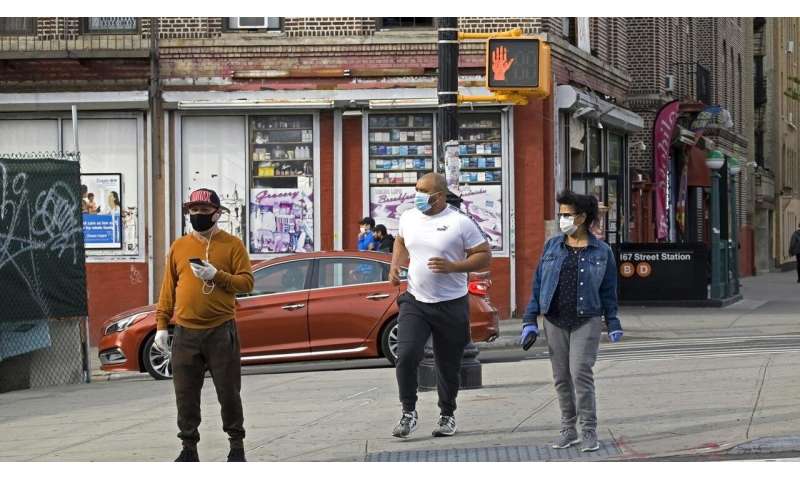
Factors linked to structural racism put Latino communities in the U.S. at high risk of COVID-19, a study published today says. The new study is the first nationwide analysis of COVID-19 cases and deaths among Latinos.
“We found that crowded housing, air pollution, jobs in the meatpacking and poultry industry and other factors put Latinos at high risk of COVID-19 infections and death,” said lead author of the study Carlos E. Rodriguez-Diaz, Ph.D., MPH, an associate professor of prevention and community health at the George Washington University Milken Institute School of Public Health (Milken Institute SPH). “Our study’s findings will help us look for tailored interventions aimed at keeping Latino communities healthy and safe.”
Latino counties account for 11 percent of counties in the Northeast, 4 percent of counties in the Midwest and 33 percent of counties in the West, yet they comprise a disproportionate number of COVID-19 cases in each region, Rodriguez-Diaz and his team found.
Other reports suggest that Latinos make up 18 percent of the U.S. population but they account for 33 percent of all known COVID-19 cases.
To help identify some of the factors that put Latinos at such high risk, Rodriguez-Diaz and a multi-institutional team compared COVID-19 cases and deaths through May 11, 2020 in counties with a disproportionately large number of Latinos to all other U.S. counties. They also looked at county characteristics that could affect the risk and created a map of hot spots for COVID-19 among Latinos.
The study found that Latino risks and deaths varied by region, with more COVID-19 infections found in the Midwestern and Northeastern Latino counties.
However, the study suggests different reasons for the high risk. In the Northeast, many Latinos live in crowded housing units and are working on the frontlines or in essential jobs. Such conditions make it difficult to practice social distancing or isolation when necessary.
Also, these predominantly Northeastern Latino neighborhoods are often located near busy highways or polluting industries. Researchers know that breathing in traffic emissions and other kinds of pollution can affect the respiratory system and can put people at risk for COVID-19 infection or a severe case of COVID-19.
At the same time, the researchers found that COVID-19 deaths were higher only in the Midwestern Latino counties. Rodriquez-Diaz thinks that the high risk of death is related to the lack of health care and occupational risk—many of the Latinos in these areas work in risky meatpacking plants. Workers in these plants typically are not provided with protective equipment and cannot maintain a safe distance from co-workers, he said.
Across the United States, five out of six Latinos work in delivery jobs or other work that requires travel and thus can increase the risk for exposure to the COVID-19 virus. This study is limited to the data available through mid-May. Many Latinos live in the South and Western states, which are the regions that are currently experiencing a surge in COVID-19 cases and deaths. While not captured in this study, it is very likely that the risks for infections and disease for these communities remains the same due to the lack of policies to address them early in the epidemic, Rodriguez-Diaz warns.
Other research has shown that Latinos, Blacks and other people of color are at higher risk of getting infected with the virus or dying of COVID-19. Some of the same authors of this study previously showed that factors that contribute to structural racism also mean that COVID-19 deaths in predominantly Black communities are much higher than average.
“It’s clear that the social determinants of health place communities of color at greater risk for COVID-19,” said Greg Millett, MPH, senior author of the paper and Vice President and director of public policy at amfAR, The Foundation for AIDS Research. “And, in the absence of complete national data, using the demographics of counties is a useful way to track the impact of COVID-19 in Latino as well as black communities.”
Source: Read Full Article